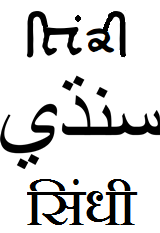Language/Sindhi/Grammar/Subjunctive-Mood
Introduction
In this lesson, you will learn about the Subjunctive Mood in Sindhi. The subjunctive mood is used to express wishes, desires, and hypothetical situations. The subjunctive is not used as widely in Sindhi as in some other languages, but it is still an important concept to understand.
Forming the Subjunctive Mood
To form the subjunctive mood in Sindhi, you need to use the subjunctive form of the verb. The subjunctive form is the same as the present tense form for most verbs, but there are some irregular verbs that have specific subjunctive forms that you will need to learn.
Regular Verbs
For regular verbs, the subjunctive form is the same as the present tense form. You just need to use the subjunctive form of the verb in a sentence to express a wish, desire, or hypothetical situation.
Here are some examples:
| Sindhi | Pronunciation | English |
|---|---|---|
| مونهنجي گدرين متذکره ٿي | Munhiji gadreen muzakra thi | May he remember our sacrifice. |
| سنڌي خو شہري ٿو، خيرچ ميں آچو ٿو | Sindhji kho shehri tho, khairch mein aacho tho | If you come to Sindh, you are welcome in my home. |
Irregular Verbs
There are some irregular verbs in Sindhi that have specific subjunctive forms that you will need to learn. Here are some examples:
| Sindhi | Pronunciation | English |
|---|---|---|
| علي انجها | Ali anjaha | May Ali come. |
| مارچي سڀ خير خواهي جي ڀادل پوجڻ کلياس | Marchi sabh khair khwahi ji bhaidal poojhan kalyas | If everything goes well, we will worship the goddess Bhaidal tomorrow. |
Using the Subjunctive Mood
The subjunctive mood is used to express wishes, desires, and hypothetical situations. Here are some examples:
Wishes and Desires
You can use the subjunctive to express wishes and desires that you have for yourself or others. Here are some examples:
- أوهان جي قسمت چيندا رستو || Uhhan ji qismet chindda rasto || May their fate be bright.
- توهان جو روچ تينهنجي رستو سگهجو || Tohaan jo roch tinhinji rasto seghojo || May your wishes come true.
Hypothetical Situations
The subjunctive mood is also used to express hypothetical situations. Here are some examples:
- هو آفتاب ۾ ڏڏيجي آهي، چنڊ نه آهي ٿي || Ho aftaab mein ddadiji aahi, chandd na aahi thi || Suppose he is born in sunlight and is not under the moon.
- جينهنجي جي فرضي چانچن ٻئي آهي، ٻولي سڄي ٿي || Jinhoonji ji farzi chan chan bethe aahi, bolli sagi thi || If he is imagined to be sitting at the right place, let his words be true.
Conclusion
In conclusion, the subjunctive mood is an important concept in Sindhi grammar. It is used to express wishes, desires, and hypothetical situations. To form the subjunctive mood, you need to use the subjunctive form of the verb. Irregular verbs have specific subjunctive forms that you will need to learn. Practice using the subjunctive form in sentences to express wishes, desires, and hypothetical situations.

